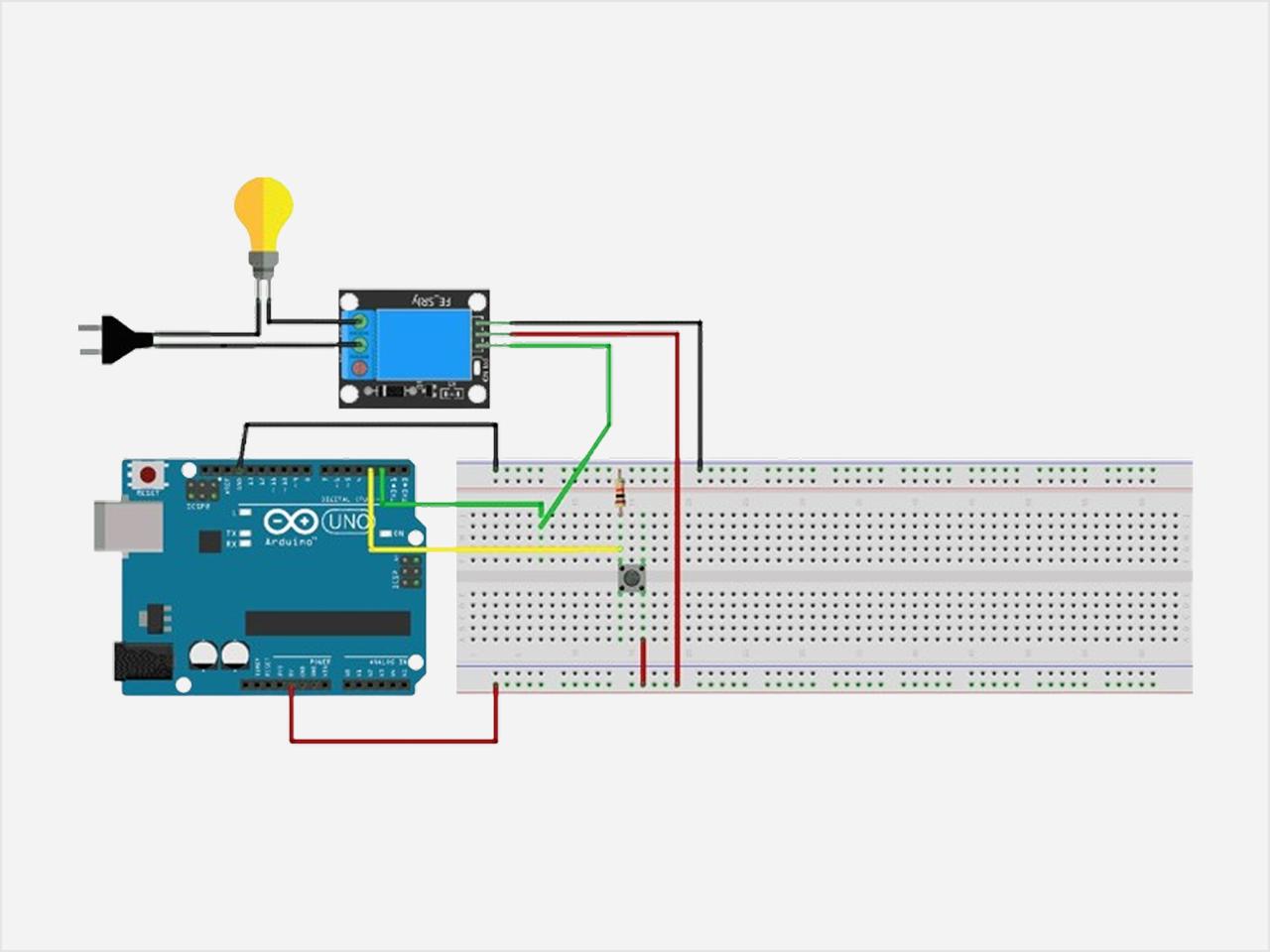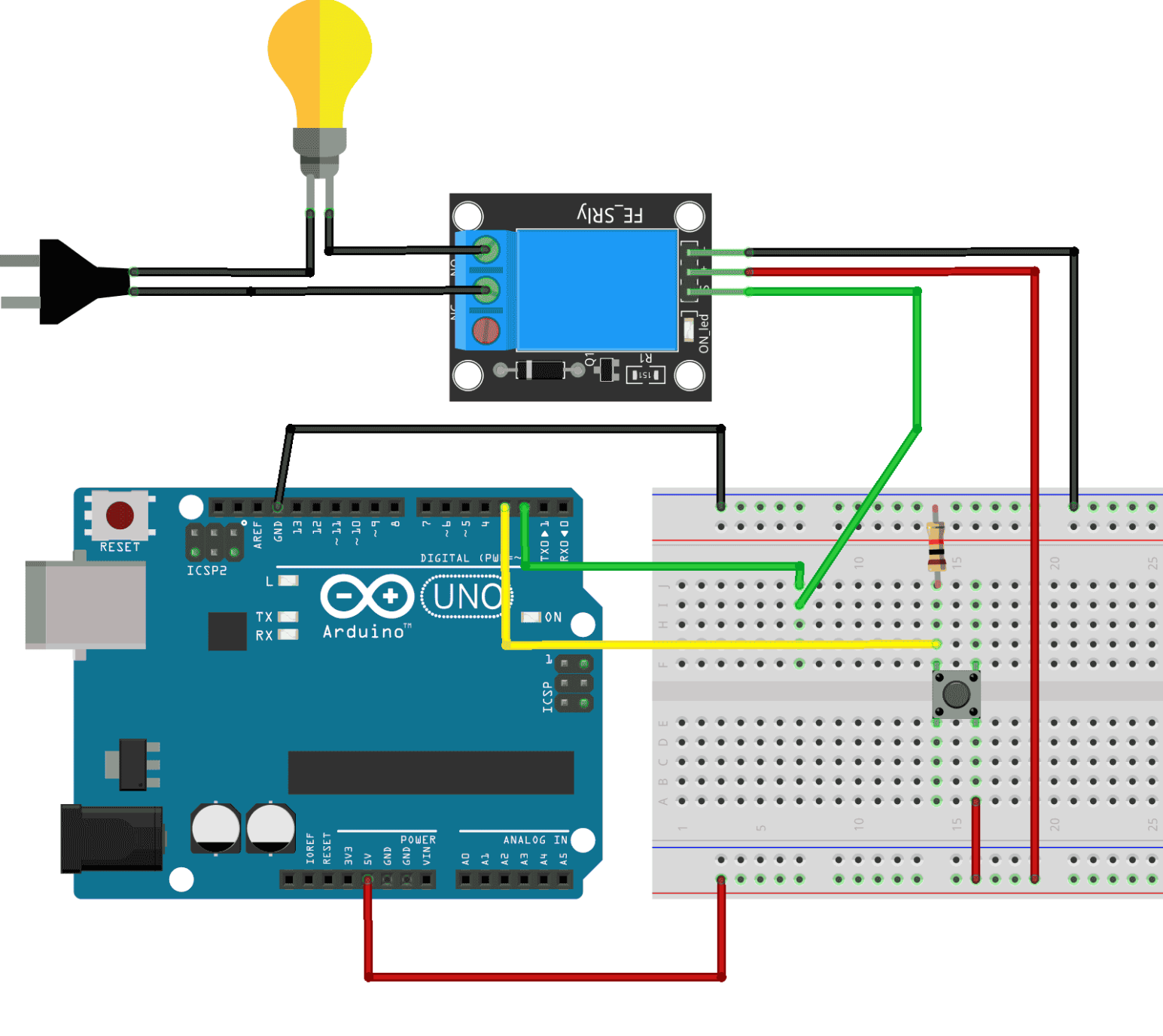Tutorials
Introduction To Relay

Relays are a great way to control high-voltage or high-current devices like lamps, motors, or appliances with a low-power microcontroller like an Arduino. In this post, I’ll show you how to get started with a relay, a button, and an Arduino.
Whether you're just starting out or adding a relay to your DIY automation project, this guide is perfect for beginners.
What is a Relay?
A relay is an electrically operated switch. It allows one circuit (like your Arduino) to control another circuit (like a lamp or fan) without direct electrical connection. This is useful when the controlled circuit operates at a different voltage or current level than the Arduino.
What You Need
| Component | Description |
|---|---|
| Arduino (Uno, Nano, etc.) | Your microcontroller brain |
| Relay Module | 1-channel 5V relay |
| Push Button | To trigger the relay |
| 10kΩ Resistor | Used for button pull-down |
| Jumper Wires | For connections |
| Breadboard | for prototyping |
Schematic

Wiring summary:
-
Button: Connected to pin 3, with a 10kΩ pull-down resistor (one leg to GND).
-
Relay module: IN pin to Arduino pin 2, VCC to 5V, GND to GND.
-
When button is pressed, the relay toggles its state (on/off).
const int buttonPin = 3; // Button connected to pin 3
const int relayPin = 2; // Relay connected to pin 2
bool relayState = false; // Current state of the relay
bool lastButtonState = HIGH; // Previous button state
unsigned long debounceTime = 50; // Debounce time in milliseconds
unsigned long lastDebounceTime = 0;
void setup() {
pinMode(buttonPin, INPUT_PULLUP); // Enable internal pull-up resistor
pinMode(relayPin, OUTPUT);
digitalWrite(relayPin, LOW); // Start with relay OFF
}
void loop() {
bool reading = digitalRead(buttonPin);
// Check for button state change
if (reading != lastButtonState) {
lastDebounceTime = millis(); // Reset debounce timer
}
// If stable for debounce time, toggle the relay
if ((millis() - lastDebounceTime) > debounceTime) {
if (reading == LOW && lastButtonState == HIGH) {
relayState = !relayState;
digitalWrite(relayPin, relayState ? HIGH : LOW);
}
}
lastButtonState = reading;
}
How It Works
-
The button is connected with a pull-down resistor, so it reads
LOWwhen unpressed andHIGHwhen pressed. -
When the button is pressed, the Arduino toggles the relay state.
-
Debouncing is used to prevent accidental multiple triggers from a single press.
-
The relay turns ON or OFF based on the current state.
Note: Some relay modules are active-low, meaning they activate when their input is LOW. If that’s the case, just reverse the digitalWrite logic.
✅ Applications of Relays
-
Home automation: Lights, fans, heaters
-
Industrial control: Pumps, valves, motors
-
IoT systems: Smart energy management
⚠️ Safety First
-
Relays can control high voltage AC. Always make sure you're handling high voltage wiring with care.
-
Never touch the relay terminals when it's powered.
-
If you're new to handling AC, stick to low-voltage testing, or seek help before working with mains electricity.
